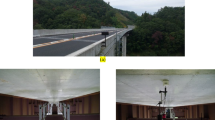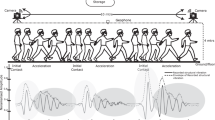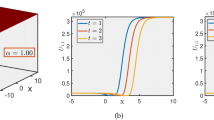Abstract
THAT a high frequency longitudinal vibration will travel more slowly than a low frequency one may be qualitatively foretold from Rayleigh's1 treatment of the effect of lateral inertia on the natural period of longitudinal vibration of cylindrical rods. However, when Rayleigh's formula is applied to the case given by Dr. Wall2, where the wave-length is stated to be 18 inches and the diameter 0·123 in., the effect of lateral inertia is found to be negligible.
This is a preview of subscription content, access via your institution
Access options
Subscribe to this journal
Receive 51 print issues and online access
$199.00 per year
only $3.90 per issue
Buy this article
- Purchase on SpringerLink
- Instant access to full article PDF
Prices may be subject to local taxes which are calculated during checkout
Similar content being viewed by others
References
“Theory of Sound”, vol. 1, p. 251.
NATURE, 135, 151; 1935.
Canad. J. Research, 5, 601; 1931.
Phys. Rev., 38, 935; 1930.
Canad. J. Research, 11, 254; 1934.
Author information
Authors and Affiliations
Rights and permissions
About this article
Cite this article
SPROULE, D. Simultaneous Travel of a Surge of Stress and a Group of High-Frequency Waves of Stress in a Steel Wire. Nature 135, 547 (1935). https://doi.org/10.1038/135547a0
Issue date:
DOI: https://doi.org/10.1038/135547a0



